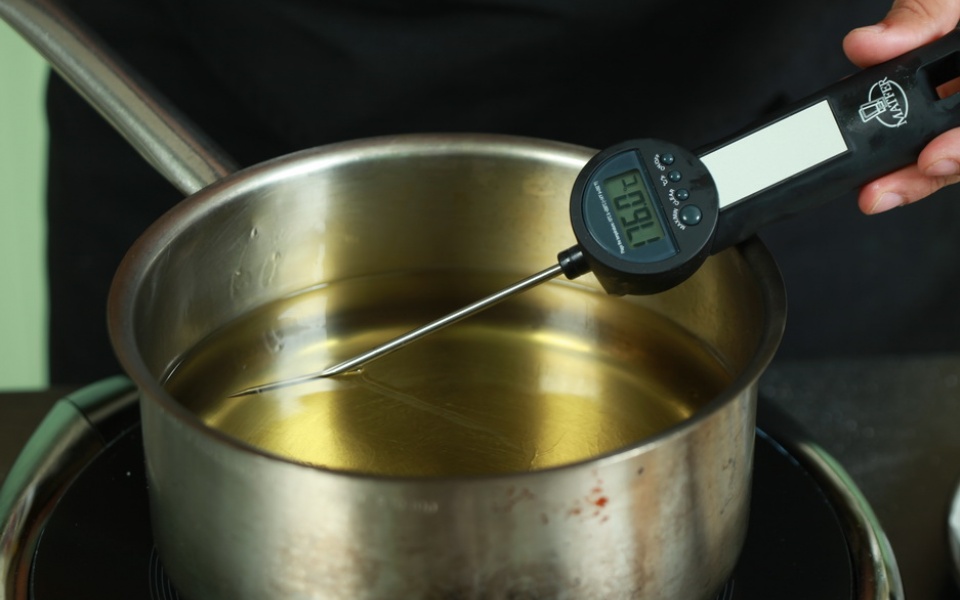 TIPS
TIPS

Frying is divided into 2 basic categories, shallow and deep, the basic difference between the two being the quantity of oil.
In shallow frying, the oil must cover about 1/3 of the height of the food and not cover it, while in deep frying the food is immersed in the oil. Think of the difference between a schnitzel and a fried potato. In all other respects, the two methods are not that different.
In contrast to sautéing, in frying cooking is achieved from the heat of the oil and not from the immediate contact with the frying pan. For this reason, the selection of the right fat is important. Equally important is for the fat to be at the right temperature; if it is too hot, the crust will burn and the inside will be raw, if not hot enough, the crust will not develop properly and the food will absorb too much fat.
Some type of coating is used very often in this method: flour, breadcrumbs or batter.
The aim is for fried foods to be crunchy on the outside and tender on the inside.
The color must be light to dark golden brown.
Foods suitable for deep frying:
- Meat : mainly poultry
- Fish : fillets
- Vegetables : cut into identical size pieces
To see the deep frying process step-by-step, follow the photos order.
-
Heat the container with the oil.
The temperature may vary according to the food, but is usually 180°.
If you don’t have a special thermometer you can check the temperature by throwing a small piece of bread into the oil. The bread must immediately begin to fry and gradually turn golden.
The correct temperature is, perhaps, the most important point of the entire process. If the oil is too hot, the food will cook very quickly on the outside and the inside will remain uncooked. If the oil’s temperature is too low, the food will absorb a large quantity of oil and produce a greasy final product.

-
Add the food to oil.
Carefully and from a short distance to avoid splashing.

-
Do not overfill the pan.
Add enough quantity so that the frying continues at the same intensity.
If you overfill the pan, the temperature of the oil will fall and you will experience the same situation described above.

-
Stir the food with a slotted spoon or a spider.

-
Remove the food as soon as it is ready, allowing it to drain on absorbent paper.
Make sure the entire surface of the food comes into contact with the paper so that all the excess oil is absorbed.

-
Season with salt.















